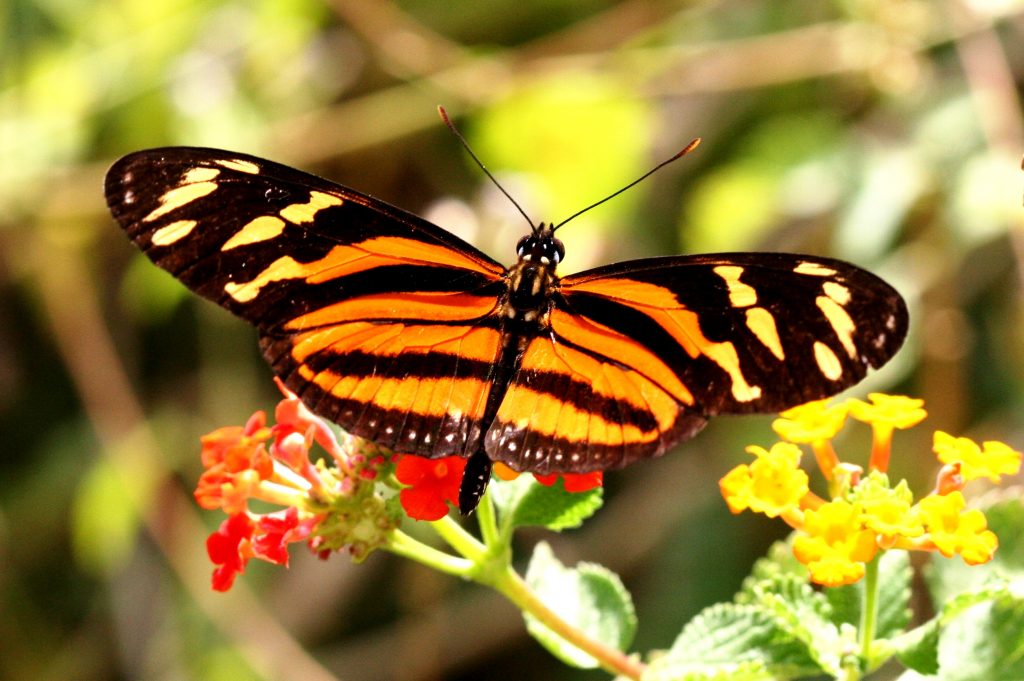
Gifts of the Seasons
By Anita Westervelt, Texas Master Naturalist
Gifts come in many forms. To Texas Master Naturalists it might be a “life” bird or a surprise “first ever” sighting of an uncommon butterfly.
A butterfly that’s created quite a stir recently at a couple of local nature parks is the Isabella’s Heliconian, Eueides isabella. While not rare to the Lower Rio Grande Valley, it’s considered a periodic immigrant to central Texas. Its habitat is subtropical woodland edges, scrub and brushy fields. Its range is Brazil north to Mexico.
Harlingen’s Hugh Ramsey Nature Park is one of the Valley’s parks where the Isabella Heliconian has been spotted. Social media postings show the excitement these colorful butterflies have caused especially for those with a handy camera who have shared their pictures of the butterflies feasting on blooms of mist flower and white plumbago.
This is an example of one of the reasons Texas Master Naturalists advocate keeping the habitat native — to keep attracting wildlife we enjoy seeing, studying and protecting. If there were no nectar plants blooming, there would be no butterflies.
Native plants are the ones that have survived through hundreds of years of incredibly diverse extremes like our recent weather where one day it’s a beautiful, balmy 84 degrees and two days later, blustery and cold with the wind-chill indicating a drop to 25 degrees during the night.
Native plants provide food for the wildlife that also is native to the Valley. The more habitat that sustains the critters, the better the chance our critters will continue to make the Valley their home.
It’s all about the food chain. Native plants attract beneficial insects, not just nectar for butterflies and berries for birds. Flowering plants attract bees, wasps, ants and other bugs that pollinate plants and food crops; birds and lizards eat insects, spiders, bug larvae and sadly, butterflies and their caterpillars; other critters feed on birds and lizards and life goes on as designed up and down the food chain. Thick shrubs and great canopied trees provide shelter for critters and nesting sites for birds.
Butterflies will hang around as long as there’s a food source. Fortunately, there’s always something blooming in the Valley. Some plants bloom throughout the year like caesalpinia and olive trees. White lantana and low crotons seem to never quit. A few of the other nectar-providing plants that are blooming now and into winter include mist flower, trixis, scarlet sage, white plumbago, skeleton leaf golden eye daisy and Turk’s cap.
Some butterflies get nourishment from berries, rotting fruit and oranges that fall off the tree and split open. Others are attracted to a home concoction of bananas, beer and brown sugar. Type “banana brew for butterflies” in your search engine for a recipe.
A number of Facebook pages like Rio Grande Valley Butterflies, Friends of Hugh Ramsey Nature Park and Native Plants of the Rio Grande Valley showcase photographs of butterflies and native plants to help nature enthusiasts interested in learning about the gifts of the natural world of the Rio Grande Valley.
For more information about Texas Master Naturalist visit www.rgvctmn.org.
